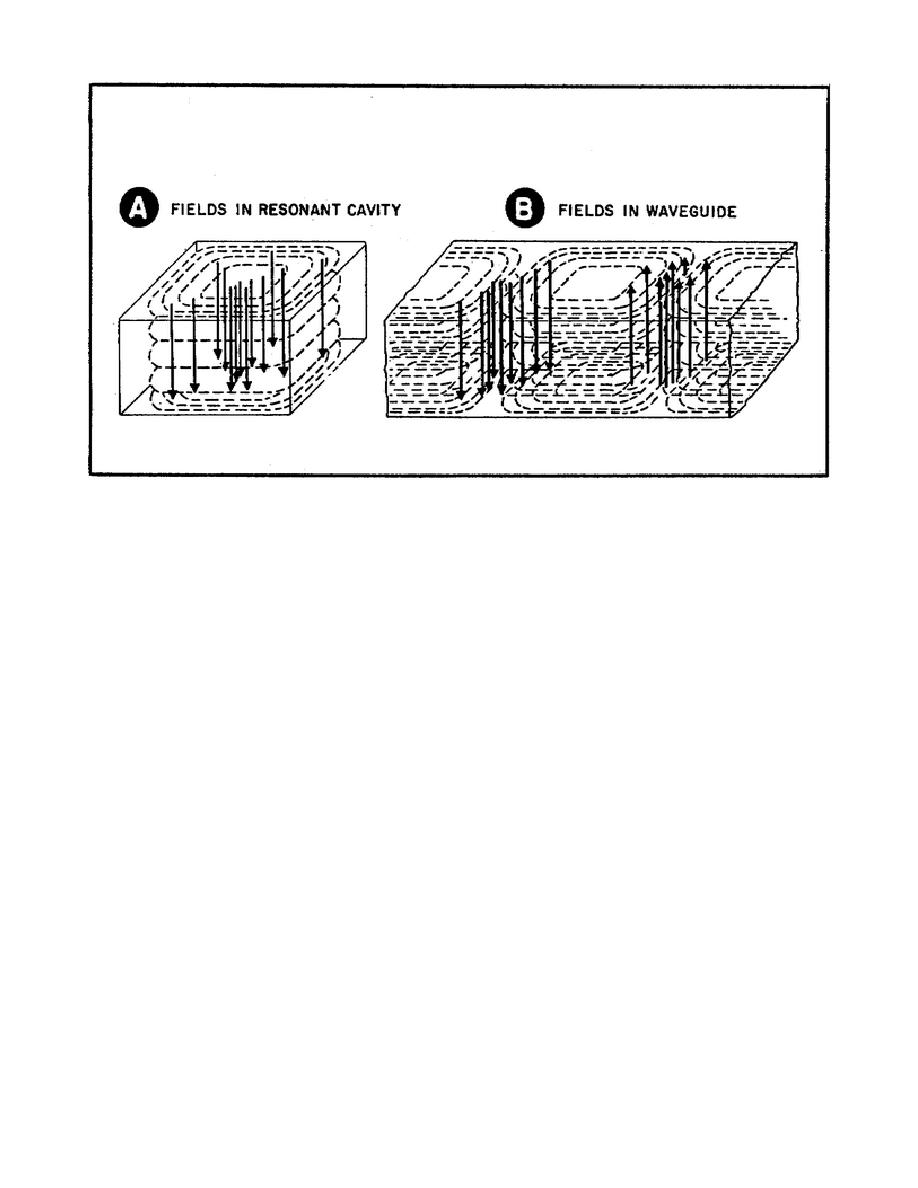
Figure 111.
The E and H Fields One-Half
Cycle Later.
e. In Figure 111, the fields have changed from a maximum positive
direction to maximum negative direction.
However, the variation is
sinusoidal. That is, they change just as a sine wave of voltage or current
changes from maximum positive to maximum negative.
The big differences
between the fields contained in a resonant cavity and the fields in
waveguide are as follows:
(1) The fields in a resonant cavity are completely reflected and
oscillate until all their energy is dissipated.
Also, the fields in a
resonant cavity are 90 degrees out-of-phase.
(2) The fields in a waveguide differ in that they travel down to the
end of the guide and are absorbed because the guide terminated in its
characteristic impedance. Also, they are in-phase with each other.
11. Summing up waveguide field characteristics.
a. The points or areas of maximum electric (E) field in a waveguide are
in the center of the hollow chamber.
(1) These areas of maximum E field occur every half wavelength along
the length of the guide.
(2) The areas of maximum E field are the same areas that have maximum
impedance.
b. The points or areas of maximum magnetic (H) field in a waveguide are
along the walls of the chamber. The areas of maximum H field are the same
areas that have minimum impedance.
165



 Previous Page
Previous Page
